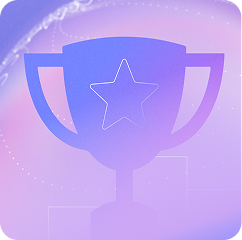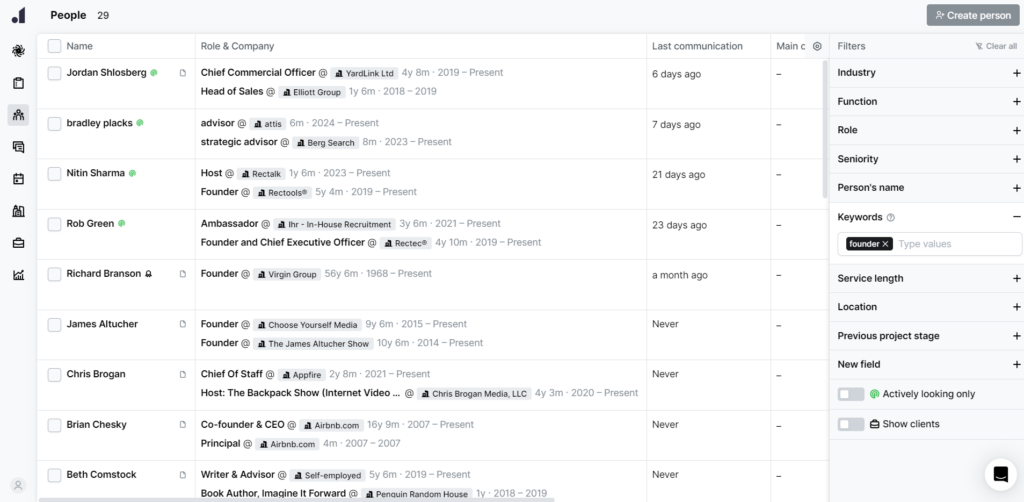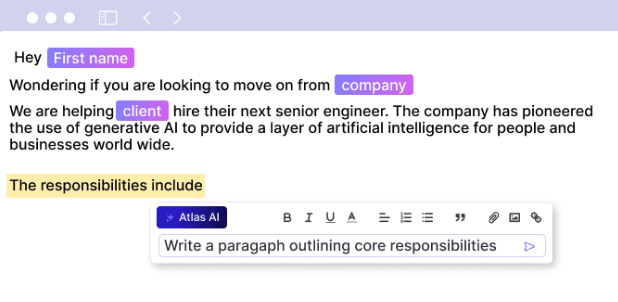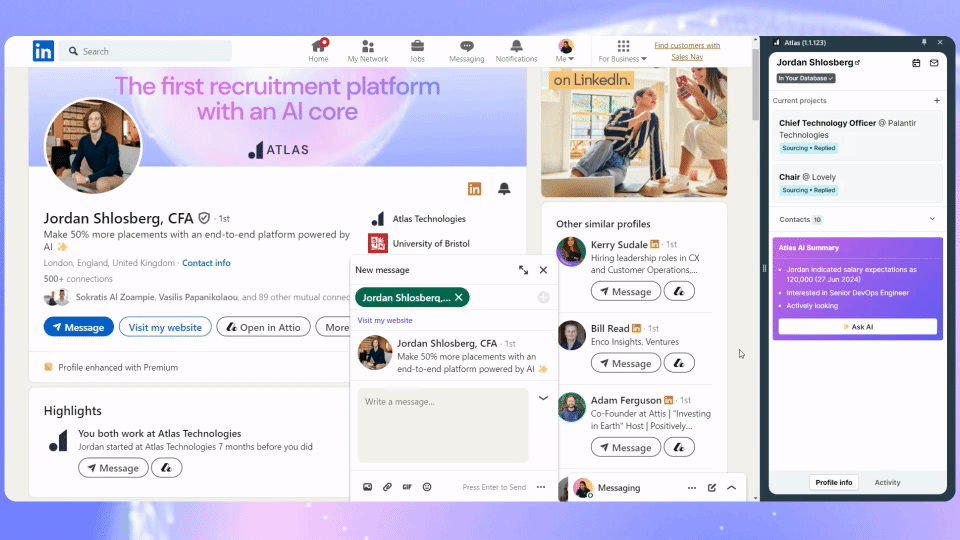
// Recruitment Technology
Turn Your Top 10 Recruitment KPIs from Average to Awesome with AI Tools
05/09/2024
15 MIN
The success of your recruiting processes relies on measuring and optimising performance effectively. As the saying goes, “what you don’t measure you can’t manage”. With the rise of AI tools, as modern recruiters, you have a chance to turn the tables in your favor. By automating tasks, improving productivity and measuring recruitment KPIs, you can ‘work smarter, not harder’.
Don’t let your outdated systems slow you down. If you want to find top candidates, impress your clients, and improve your KPIS, get the latest tech for better hiring results.
Check it out in action
Let’s dive into how AI recruiting tools can significantly improve your productivity and key performance indicators (KPIs).
Impact of AI Recruiting Tools on Top 10 Recruitment KPIs
1. Time-to-Fill (TTF)
Time-to-Fill (TTF) Definition
The length of time from the moment the position is approved to the moment a candidate accepts the job offer.
Why you need to decrease your time to fill
You have limited number of hours each day. The fewer hours it takes you to fill a role, the more roles you can fill in the same time. Lower time to fill = More placements per month.
This approach gives you insights into the efficiency and effectiveness of your recruiting efforts, helping you assess your ability to attract and secure qualified candidates promptly.
How AI recruiting tools can reduce your Time to Fill
- With AI driven search features you find the exact candidate you need (eg. Show me all the data scientists that have experience modelling churn prediction).
- An AI powered ATS applicant tracking system) can help you find candidates in your database much quicker and with much more precision.
- Using AI powered candidate outreach, you can reach out to more candidates faster and increase the number of people who show interest!
See for yourself how a powerful AI executive search software with an intuitive search experience can make sourcing easier.
2. Quality-of-Hire (QoH)
Quality-of-Hire (QoH) Definition
Assesses the overall effectiveness and success of the recruitment and hiring journey. It measures the calibre and suitability of candidates hired for specific roles within the organisation.
Quality-of-Hire takes into account various factors, including job performance, productivity, retention, cultural fit, and contribution to organisational goals and objectives.
By evaluating the performance and impact of new hires over time, organisations can determine the extent to which their recruitment efforts are aligning with business objectives and delivering value.
💡 A high Quality-of-Hire indicates that the organisation is effectively attracting, selecting, and onboarding candidates who are well-suited to their roles and contribute positively to the organisation’s success.
The Role of AI Recruiting Tools
Recruiting teams with high-maturity talent acquisition functions, often utilising recruiting tools, are twice as likely to achieve strategic goals and have lower turnover rates. Companies using AI recruiting tools reported a 38% increase in quality of hires. Research by Bersin by Delloitte
- Interview intelligence allows you to focus on the conversation and query every aspect, helping you write better reports faster.
- AI can help you assess candidates’ past experiences, preferences, and behaviours – allowing you to conduct highly relevant interviews.
- AI assessment tools use technology to assess candidates’ skills, competencies, and how well they fit into your clients’ company culture. These assessments are customisable and generated by AI.
- AI algorithms can help you assess candidate suitability by analysing more than just resumes, it can gather all the information about a particular candidate from emails, interviews, and your company’s knowledge all in one place.
3. Source of Hire
Source of Hire Definition
Measures the effectiveness of various channels or sources in attracting and ultimately hiring candidates.
Tracks where successful candidates originate from, whether it be job boards, employee referrals, social media platforms, career fairs, or other channels.
By analysing the Source of Hire KPI, organisations can gain insights into which channels are most productive in sourcing qualified candidates. By doing so, you won’t waste your time with low return candidate sources and increase billings per month.
AI Recruiting Tools in Action
Companies using AI recruiting tools saw a 20% increase in the quality of hires sourced from multiple job boards and a 15% increase from social professional networks. LinkedIn
- AI can immediately provide you with candidate information so you can focus on make placements rather than searching for data.
- AI can provide valuable insights into the most effective channels for sourcing candidates.
- Through AI-powered analytics, you can analyse vast amounts of data to identify patterns and trends related to candidate sourcing, such as which job boards, social media platforms, or referral programs yield the highest quality candidates.
- Additionally, AI-driven tools can automate the process of posting job openings across multiple platforms and optimise job descriptions to attract relevant candidates, further improving the Source of Hire metric.
With access to GDPR-compliant contact databases, Atlas puts a billion emails and phone numbers within easy reach, simplifying your contact process. With the automatic response feature, Atlas streamlines candidate communication, updating their status whenever they express interest in your role, whether through LinkedIn or email.
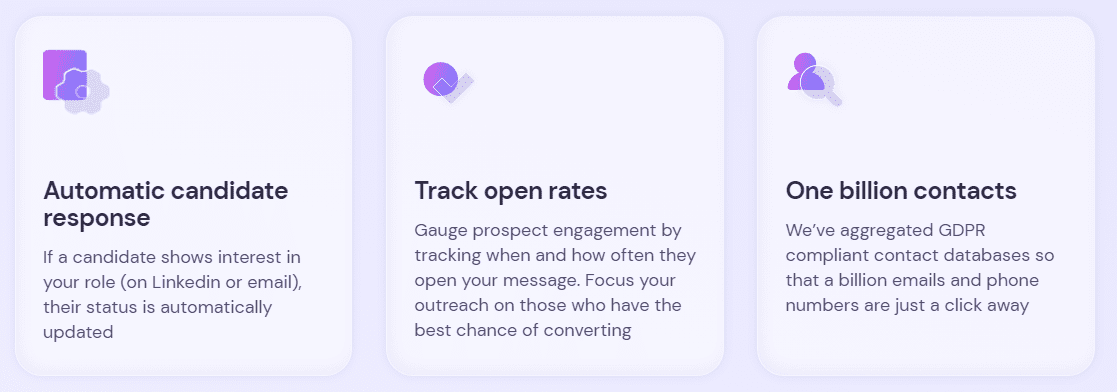
4. Cost per Hire (CPH)
Cost per Hire (CPH) Definition
Measures the average cost incurred by an organisation to fill a job vacancy.
It encompasses all expenses such as advertising costs, recruiter fees, employee referral bonuses, travel expenses for interviews, background checks, and other related expenditures.
By monitoring this KPI, companies can identify areas of improvement, optimise their hiring process, and make informed decisions regarding resource allocation.
💡 A lower CPH indicates a more cost-effective hiring process, while a higher CPH may signal inefficiencies that need to be addressed.
How AI Recruiting Tools Impact CPH
Companies that implement recruitment automation tools experience, on average, a 20% reduction in their CPH. Aptitude Research Partners
- AI-powered recruiting software can significantly reduce the manual effort and resources required for time consuming tasks such as resume screening, candidate sourcing, and interview scheduling.
- By streamlining these processes, AI helps recruiters focus on more strategic tasks, optimise their workflows, minimise recruitment costs, and achieve a lower cost per hire.
- By reallocating resources to high-performing channels and automating repetitive tasks, recruiters can achieve a lower Cost per Hire while maintaining or even improving the quality of hires.
- You can use AI-generated insights to analyse job descriptions, identify commonly searched keywords and phrases, and get suggestions to improve clarity and relevance.
Atlas utilises job details like notes and job descriptions to assist in rapidly creating high-quality initial drafts. With the AI-powered initial drafts feature, you can ensure a consistent writing style and improve response rates.
Learn more
5. Offer Acceptance Rate
Offer Acceptance Rate Definition
Tracks the proportion of job offers accepted by candidates. It calculates the ratio of accepted job offers to the total number of job offers extended by the organisation over a specific period.
💡 A high Offer Acceptance Rate indicates that the organisation is successful in attracting and persuading candidates to join the company, reflecting positively on the employer brand, hiring process, and job offerings.
Conversely, a low Offer Acceptance Rate may signal potential issues such as non competitive compensation packages, poor candidate experience, or misalignment between candidate expectations and job requirements.
How AI Recruiting Tools Can Help
- AI algorithms can analyse data from resumes, application forms, and candidate interactions to gauge if a candidate will accept a job offer taking into consideration factors such as experience and skills.
- By analysing historical data and employing machine learning, you can uncover patterns and preferences of candidates who accepted offers in the past. For instance, AI may reveal that candidates who attended certain events or engaged with specific social media content tend to accept offers. Armed with these insights, you can target similar candidates and customise their recruitment strategies to boost offer acceptance rates.
- Additionally, AI-driven chatbots and virtual assistants can provide personalised communication and support to candidates throughout the recruitment process, fostering a positive candidate experience and ultimately increasing the likelihood of offer acceptance.
See how you can personalise campaigns with our AI copilot.
6. Candidate Satisfaction Score (CSS) | Candidate Satisfaction (CSAT)
CSS and CSAT Definition
Tracks and measures how satisfied candidates are during the hiring process.
It typically involves gathering feedback from candidates about their experiences during various stages of the hiring process, including application, interview, communication with recruiters, and overall candidate experience.
CSS or CSAT surveys often include questions related to communication responsiveness, clarity of job descriptions, professionalism of interviewers, and the overall impression of the company as an employer.
💡A high CSS or CSAT score indicates that candidates had a positive experience and are more likely to consider the organisation favorably, regardless of whether they ultimately receive a job offer.
How AI Recruiting Tools can Improve CSS & CSAT
- AI recruiting tools reduce response times to candidate inquiries, demonstrating responsiveness and professionalism.
- AI chatbots and virtual assistants can now converse and engage with candidates, giving them fast answers to their questions. They also make sure candidates know the status of their applications.
- Natural Language Understanding (NLU) algorithms ensure that interactions are relevant and engaging, enhancing overall candidate satisfaction.
- Automated follow-up emails and notifications keep candidates engaged throughout the recruitment process, ensuring a positive experience from start to finish.
- AI-driven tools simplify interview scheduling, reducing delays and frustrations for candidates.
Find out how you can schedule interviews in a single click – without extra apps!
7. Retention Rate
Retention Rate Definition
Measures the percentage of employees who remain with the company over a certain period of time, typically on an annual basis.
It calculates the ratio of employees retained to the total number of employees at the beginning of the period.
Retention Rate is an important metric for assessing employee satisfaction, engagement, and loyalty, as well as the effectiveness of talent management and retention strategies implemented by the organisation.
💡 A high Retention Rate indicates that the organisation is successful in retaining its workforce, which can lead to benefits such as increased productivity, lower recruitment and training costs, and a more stable and cohesive work environment.
Alternatively, a low Retention Rate may indicate issues such as poor employee morale, inadequate career development opportunities, or ineffective leadership, which may need to be addressed to improve employee retention and organisational performance.
How AI Tools Can Help Improve Retention Rate
- Organisations that implement recruiting automation software experience, on average, a 22% increase in their Retention Rates compared to those without such tools. SHRM
- Companies using AI-driven recruitment tools reported a 19% improvement in Retention Rates compared to those deploying Conventional recruitment approaches. Deloitte
- AI algorithms can analyse various data points, such as past employment history, skills, personality traits, and cultural fit indicators, to predict which candidates are most likely to thrive and remain engaged within the company’s environment.
- AI-driven sentiment analysis tools can continuously monitor employee feedback and engagement data to identify potential issues or areas for improvement, allowing proactive measures to be taken to enhance employee satisfaction and retention.
8. Interview-to-Offer Ratio
Interview-to-Offer Ratio Definition
Measures the efficiency of their recruitment process. It calculates the ratio of the number of candidates who receive job offers to the total number of candidates who were interviewed for a specific position.
💡 A lower Interview-to-Offer Ratio may indicate that the organisation is effectively screening candidates before proceeding to the interview stage, resulting in a higher likelihood of making successful job offers.
Whereas, a higher ratio may suggest inefficiencies in the candidate screening process or challenges in converting interviews into offers, which may require further analysis and improvement.
How AI Plays a Key Role in Improving the Interview-To-Offer Ratio
- AI recruiting tools streamline the candidate screening process, ensuring that only the most qualified candidates proceed to the interview stage, thereby reducing the number of interviews needed.
- AI algorithms can accurately match candidates to job roles based on skills, experience, and cultural fit, increasing the likelihood of successful interviews and job offers.
- AI tools can determine the efficiency of the recruitment process by tracking the number of interviews conducted per job offer extended,
- AI algorithms can analyse candidate interaction data to determine the most effective methods of communication and timing for scheduling interviews, leading to improved response rates and scheduling efficiency.
9. Hiring Manager Satisfaction
Hiring Manager Satisfaction Definition
Assesses the satisfaction level of hiring managers with the candidates presented to them and the overall recruitment process.
It encompasses various factors such as the quality of candidates presented, the efficiency of the hiring process, communication with recruiters, and overall satisfaction with the recruitment experience.
Monitoring Hiring Manager Satisfaction allows organisations to gauge the success of their recruitment efforts, identify areas for improvement, and ensure alignment between hiring manager expectations and recruitment outcomes. It plays a crucial role in fostering collaboration between hiring managers and recruiters, enhancing overall recruitment effectiveness, and ultimately, achieving organisational objectives.
💡 A high level of Hiring Manager Satisfaction indicates that hiring managers are satisfied with the caliber of candidates provided, the responsiveness of recruiters, and the effectiveness of the recruitment process in meeting their needs and expectations.
How AI Can Enhance Hiring Manager Satisfaction Scores
- An AI-powered applicant tracking system (ATS) can automate administrative tasks such as scheduling interviews, sending reminders, and updating hiring managers on candidate progress. By streamlining these processes, you can ensure that hiring managers have timely access to relevant information and are more actively involved in the recruitment process.
- AI algorithms can analyse hiring manager feedback and preferences to provide tailored candidate recommendations that closely align with their requirements and expectations.
- For example, if a hiring manager consistently provides positive feedback on candidates with specific skills or experiences, the AI system can prioritise similar candidates in future searches.
- Additionally, AI-driven analytics can identify potential bottlenecks or areas for improvement in the recruitment process, allowing recruiters to proactively address issues and enhance overall satisfaction.
10. Candidate Experience (CX)
Candidate Experience (CX) Definition
Measures the quality of interactions and experiences candidates have throughout the recruitment process.
It evaluates the satisfaction levels, perceptions, and sentiments of candidates at various stages, including application submission, communication with recruiters, interview process, feedback provision, and onboarding.
CX KPI provides insights into engagement and the effectiveness of recruitment processes, and the overall impression it leaves on potential candidates.
💡 A positive CX KPI indicates that candidates are satisfied with their experiences, which can lead to benefits such as higher offer acceptance rates, improved employer branding, and increased candidate referrals.
How AI Tools and Recruitment Automation Can Improve CX
Companies using AI-driven recruitment tools experienced a 30% improvement in Candidate Experience metrics. Brandon Hall Group
- AI tools simplify the application process, providing a seamless and user-friendly experience for candidates, reducing frustration and dropout rates.
- Automated systems can provide real-time feedback to candidates, keeping them informed about their application status and progress throughout the recruitment process.
- Automated follow-up emails and notifications maintain engagement throughout the recruitment journey, guaranteeing a positive experience every step of the way.
- Automation reduces response times to candidate inquiries, demonstrating responsiveness and professionalism, and enhancing candidate satisfaction.
- AI tools analyse candidate feedback and engagement data to identify areas for improvement in the recruitment process, leading to a more candidate-centric approach.
Every moment counts when it comes to securing top talent. Here’s how Atlas recruitment platform is designed to reduce time-to-fill rates and deliver results quickly.
Advanced Candidate Sourcing
- Uses AI algorithms to analyse diverse data sources
- Swiftly identifies qualified candidates tailored to recruiters’ needs
- Minimises time spent on manual candidate searches
Automated Resume Screening
- Evaluates resumes against predefined criteria using intelligent screening algorithms
- Pinpoints the most promising candidates
Seamless Collaboration
- Ensures swift decision-making and minimises delays
- Built-in communication tools and real-time updates
What is Automation in the Recruitment Process?
Automation in recruitment refers to the use of technology, specifically software and AI-driven tools, to automate various tasks and processes involved in sourcing, screening, and engaging candidates. These tasks typically require significant time and effort from recruiters, but with recruiting automation, they can be completed faster, more accurately, and with fewer resources.
Here’s a breakdown of some key areas where AI recruiting tools play a crucial role in the hiring process:
1. Candidate Sourcing
Recruiting automation tools can assist you in finding and attracting candidates from different channels, such as social media sites, professional networks, and multiple job boards. AI algorithms can analyse candidate profiles and match them to job requirements, significantly reducing the time spent on time consuming tasks and manual sourcing.
2. Resume Screening
Screening resumes is a time-consuming task for recruiters. Recruiting automation software can parse resumes, extract relevant information, and even evaluate candidates against predefined criteria. This accelerates the screening process and maintains consistency in evaluating candidates.
3. Interview Scheduling
Arranging and scheduling interviews with many people can be quite a challenge. Recruiting automation tools can handle interview scheduling by syncing with recruiters’ calendars, sending automated invitations to candidates, and providing self-scheduling options. This eliminates the need for back-and-forth communication and minimises scheduling conflicts.
4. Candidate Communication
Keeping candidates informed and engaged throughout the recruitment process is essential for a positive candidate experience. Recruiting automation tools, such as chatbots and email automation platforms, can send personalised messages, provide status updates, and answer candidate questions, ensuring timely and consistent communication.
5. Data Analytics and Reporting
Using automation and recruitment software can empower recruiters by allowing them to collect and analyse data more efficiently, providing valuable insights into recruitment metrics and performance. AI-driven analytics tools can generate reports in seconds, allowing you to craft timely candidate reports to meet increasing demand of your clients..
Ultimately, automating your recruitment process and integrating AI can lead to improved efficiency, better candidate experiences, and more successful hiring outcomes.
Comparing AI Recruiting Tools
AI is changing how recruiters find and hire top talent and track recruitment KPIs. Among the many AI recruiting automation tools available, Atlas stands out as a one-stop shop for everything you need, from finding new candidates, generating interview notes, managing multiple outreach campaigns, to managing contracts and analytics. With Atlas, you get an all-in-one platform to make your recruitment process a whole lot easier.
Let’s compare some of the AI recruitment automation tools:
1. Candidate Sourcing and Outreach
LinkedIn Talent Hub
Although known for its strong candidate sourcing capabilities and collaborative recruitment features, LInkedin Talent Hub primarily focuses on candidate engagement and tracking within the LinkedIn ecosystem.
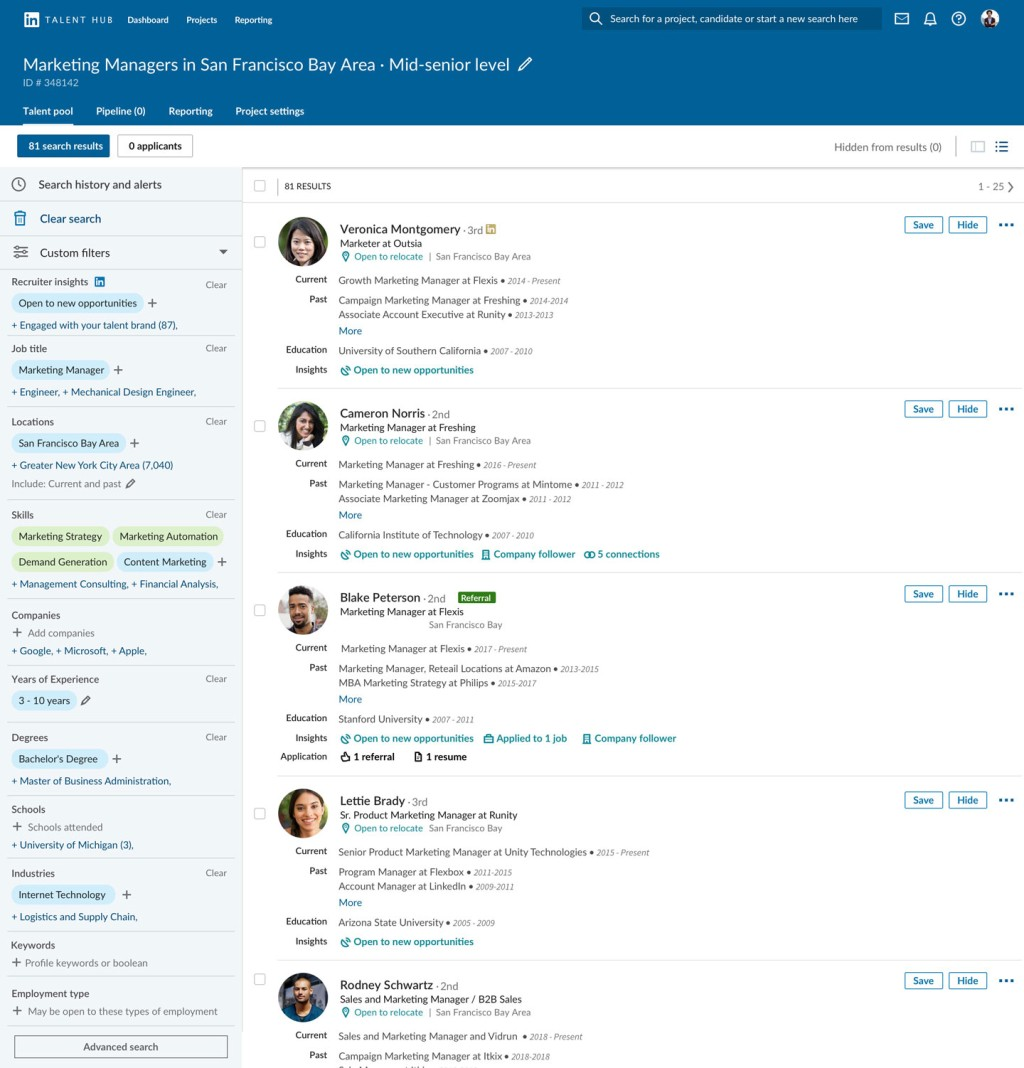
Entelo
While Entelo specialises in AI-driven candidate sourcing (particularly for engaging and sourcing passive candidates) and is effective for sourcing talent its features are limited to candidate outreach.
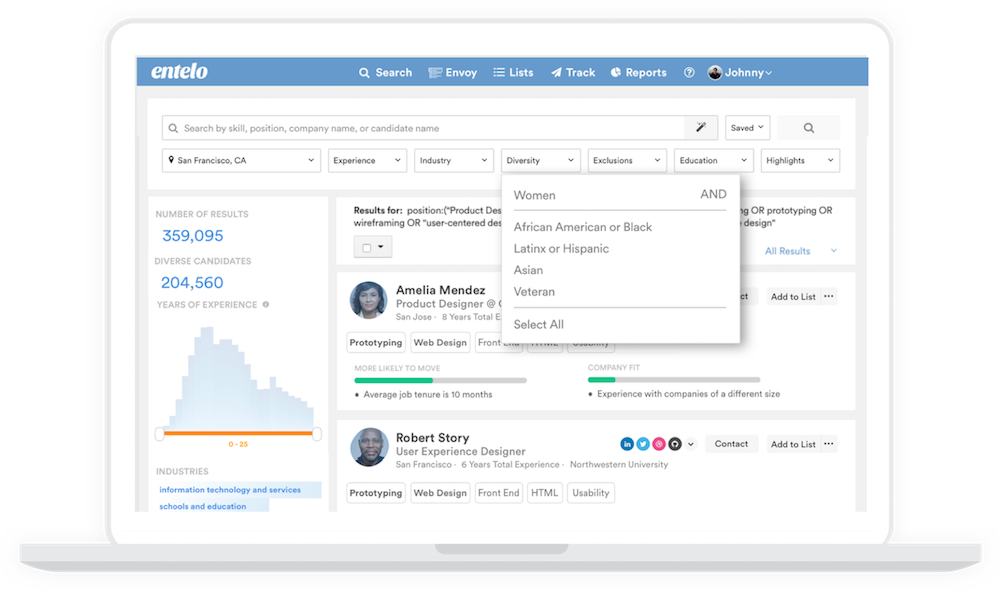
Hiretual
As a comprehensive candidate sourcing platform leveraging AI to aggregate candidate data, Hiretual works great. But, its features primarily focus on candidate sourcing rather than end-to-end recruitment.
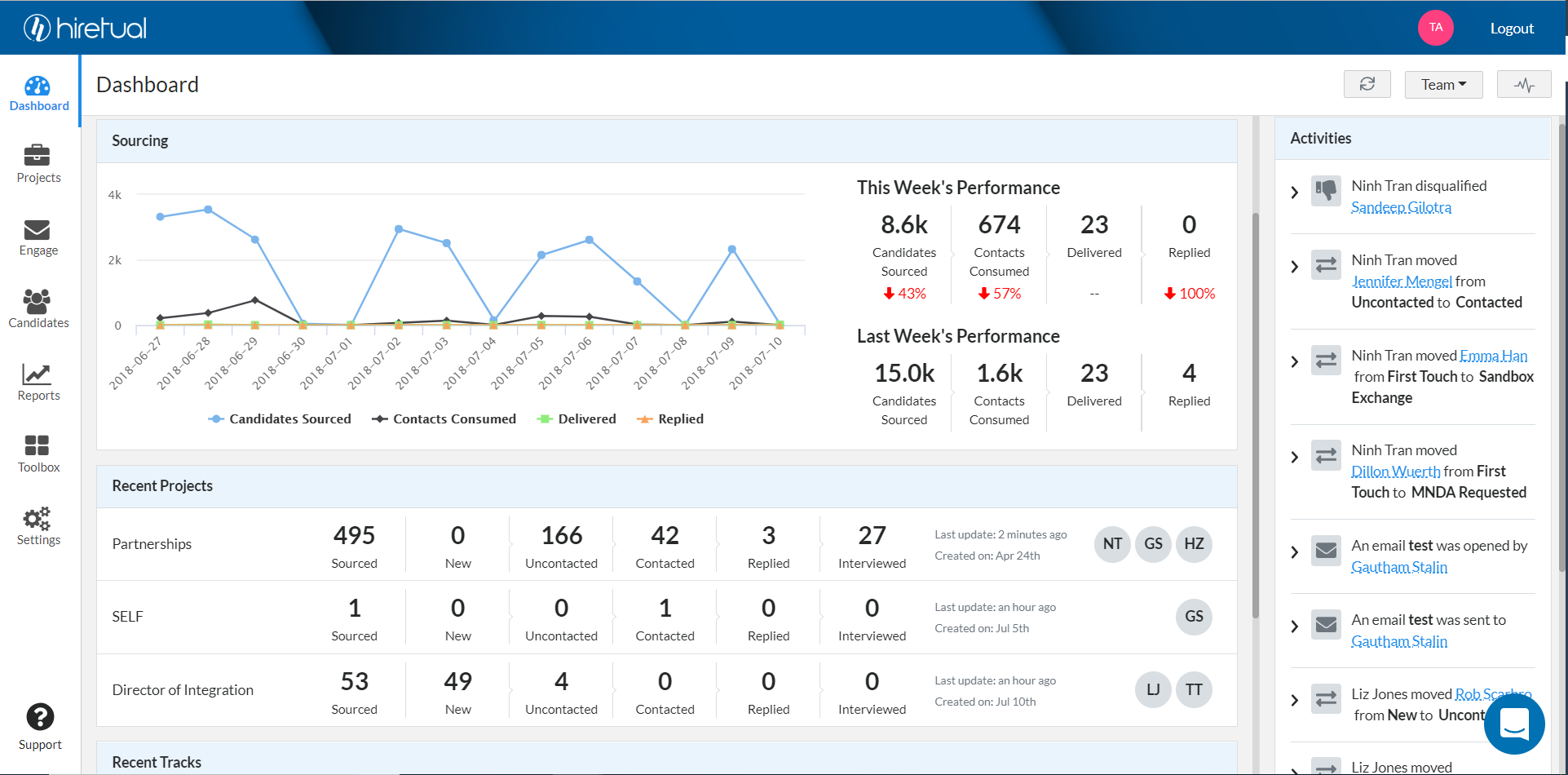
2. Job Description Optimisation
Textio
Textio can optimise job descriptions for engagement and diversity but its features are centered around job ad enhancement.
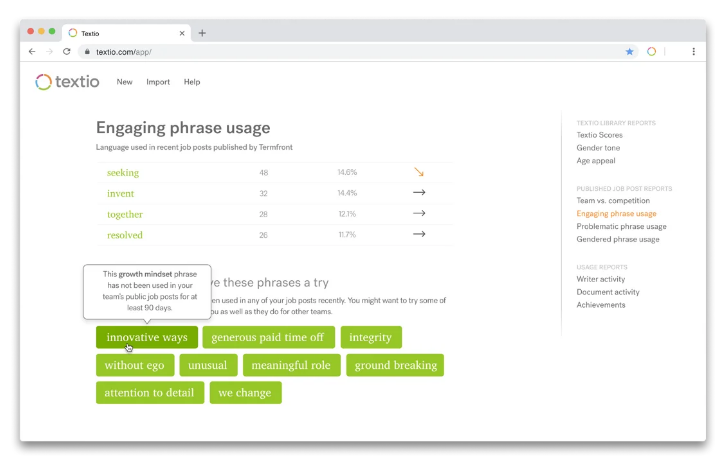
3. AI-Powered Video Interviewing platforms
HireVue and Talview
As AI-powered video interviews and assessment tools, HireVue and Talview can offer valuable insights into candidate performance and behavior, But, their functionalities mainly revolve around video-based assessments.
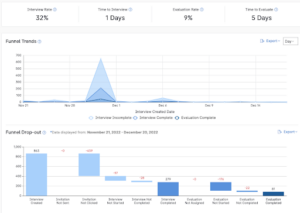
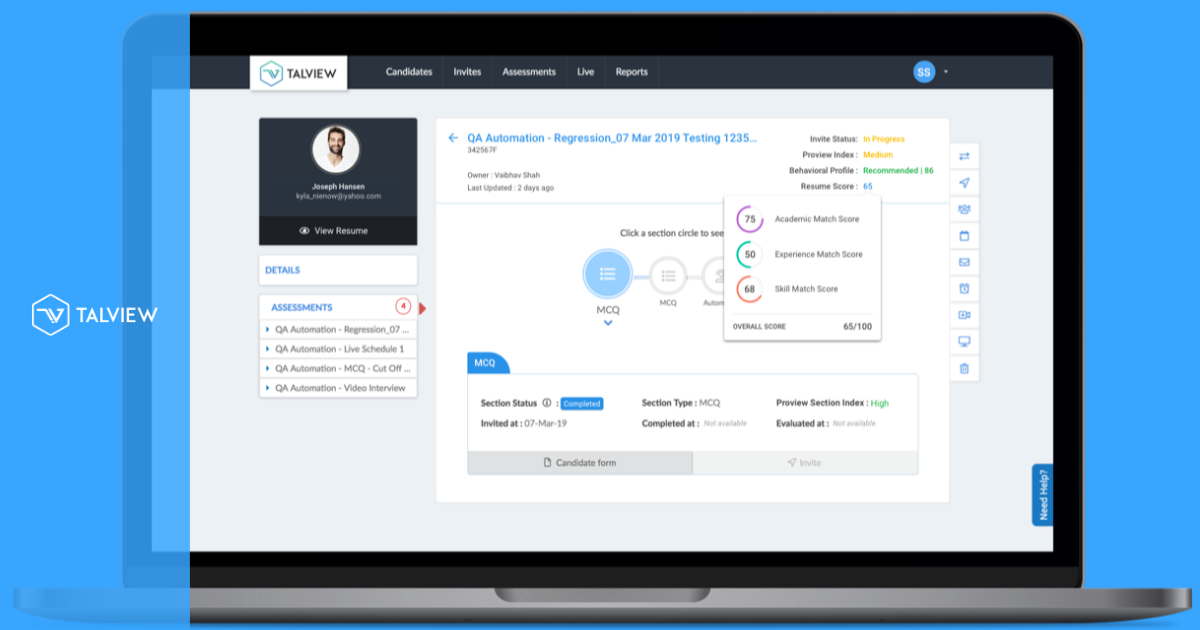
4. Candidate Engagement
XOR
If you are looking for AI-driven chatbots for candidate communication and engagement, XOR can be a good choice. However, its features are limited to conversational AI and not broader recruiting automation.
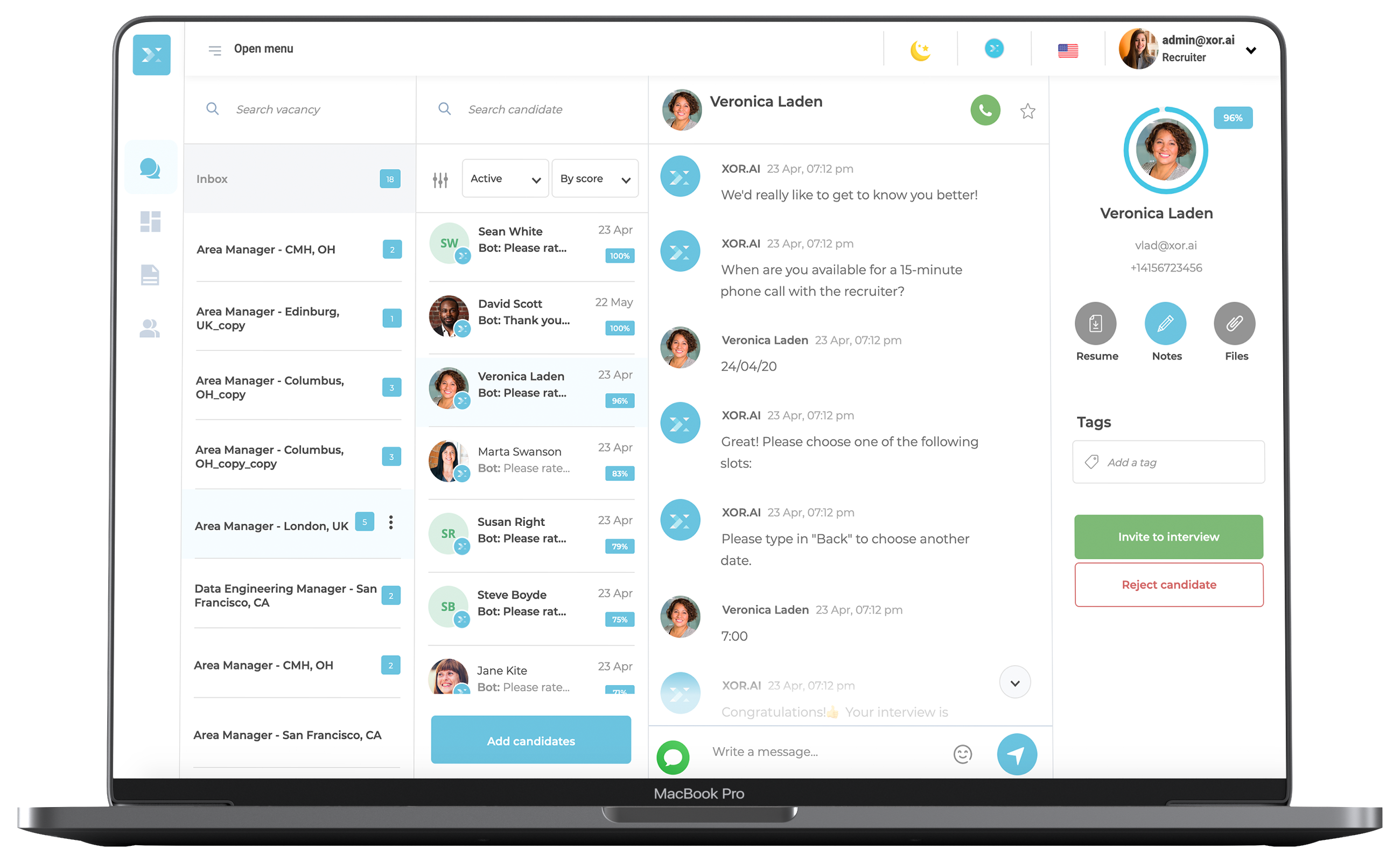
JobPal
JobPal provides AI chatbots for recruitment, enhancing candidate communication and engagement. While it can be effective for candidate interaction, its features are primarily chatbot-driven.
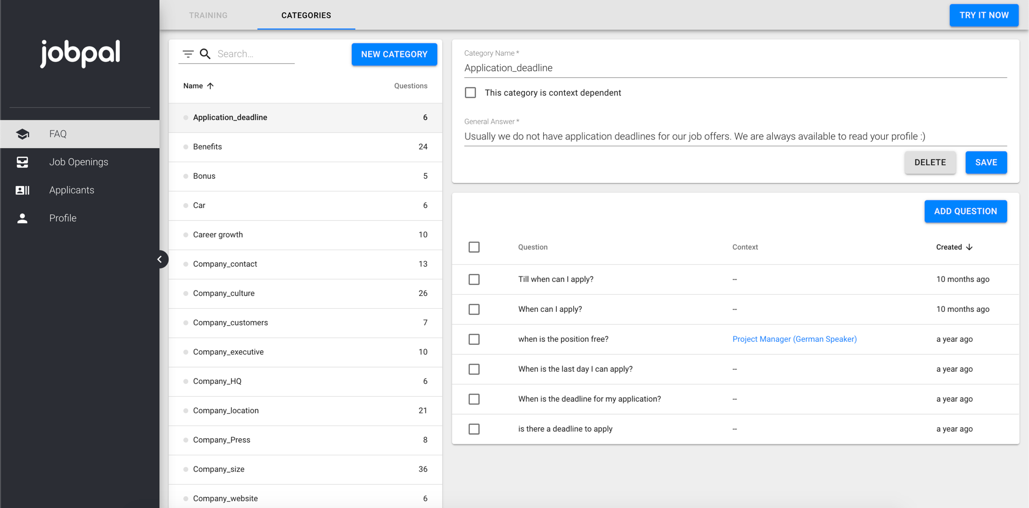
Beamery
Beamery excels in candidate relationship management (CRM) and talent engagement, nurturing candidate relationships effectively. However, its features are primarily CRM-focused rather than comprehensive recruitment automation.
Why Atlas is the All-in-One AI Recruitment Automation Software
Although the recruiting tools listed above offer unique strengths in specific aspects of recruitment, constantly switching between applications can be challenging, especially when time is of the essence for you as a recruiter.
That’s where Atlas distinguishes itself as an all-in-one recruitment platform, encompassing a comprehensive suite of AI-driven features for end-to-end talent acquisition.
From sourcing potential candidates and engagement to resume screening, interview scheduling, and CRM capabilities, Atlas offers a seamless and integrated solution for recruiters. By consolidating various recruitment tasks into a single platform, Atlas enhances efficiency, improves collaboration, and provides recruiters with actionable insights at every stage of the hiring process.
With Atlas, you can use the power of AI to streamline recruitment workflows, track your recruitment KPIs more easily, optimise candidate experiences, focus on more strategic tasks, and ultimately achieve better hiring outcomes in today’s competitive job market.
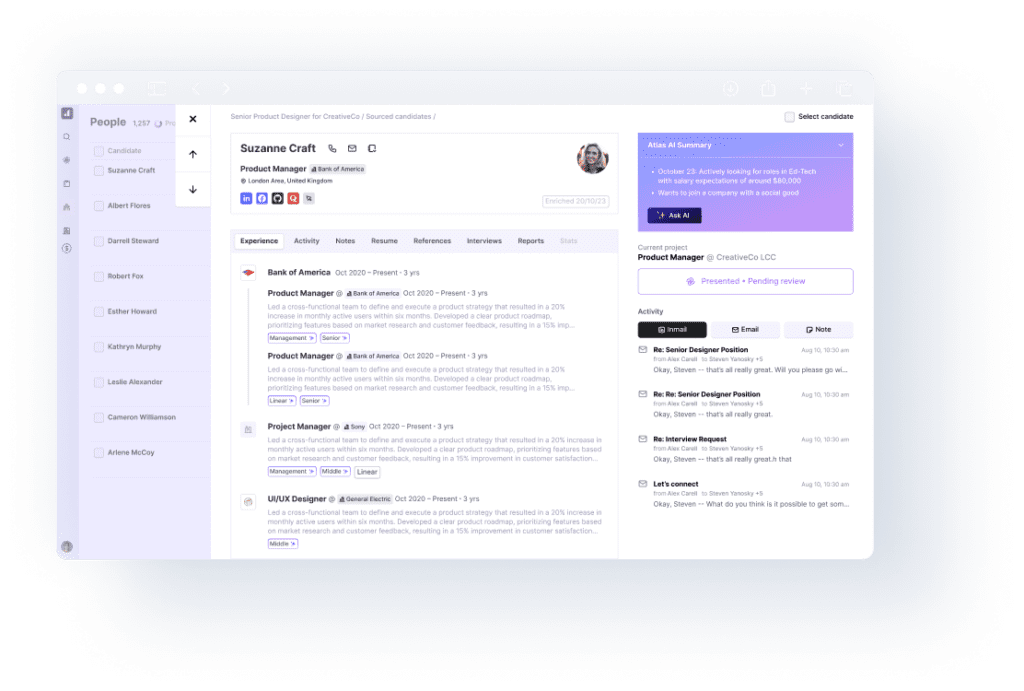
FAQs About AI Recruiting Tools
Can you automate recruiting?
Yes, recruiting can be automated using a variety of tools and technologies for seamless tracking of recruitment KPIs. From sourcing candidates to scheduling interviews and managing candidate relationships, many aspects of the recruitment process can be streamlined and optimised through automation.
- An applicant tracking system (ATS) can automate tasks such as resume screening, candidate tracking, and job posting management.
- AI-powered chatbots and virtual assistants can handle initial candidate inquiries, answer frequently asked questions, and schedule interviews.
- Additionally, automation can extend to candidate relationship management (CRM) systems, which help recruiters track interactions with candidates and maintain engagement throughout the hiring process.
By using AI recruiting tools, you can save time, improve efficiency, and focus on building meaningful connections with candidates and clients, ultimately leading to better hiring outcomes.
How do I automate my recruitment agency?
Automating involves integrating cutting-edge technology into every aspect of your hiring process.
With an AI recruitment platform like Atlas, you can streamline candidate sourcing, screening, and engagement tasks.
- Leveraging AI algorithms, the platform can analyse vast amounts of data to identify top talent more efficiently.
- It can automate repetitive tasks such as resume screening, note taking, and interview scheduling, allowing your team to focus on higher-value activities.
- It can personalise candidate interactions, improving the overall candidate experience. With features like intelligent interview AI and automated outreach campaigns, you can engage with candidates more effectively and nurture relationships throughout the hiring journey.
- Furthermore, the platform can assist with contract management and provide valuable analytics to optimise your recruitment strategies.
By embracing AI technology, you can transform your recruitment agency into a more efficient, data-driven, and successful operation.
How does recruitment automation comply with data protection regulations?
Recruiting automation platforms must adhere to data protection regulations to safeguard candidates’ personal information. Compliance with regulations such as the General Data Protection Regulation (GDPR) in the European Union and the California Consumer Privacy Act (CCPA) in the United States is essential.
These platforms typically incorporate features such as data encryption, access controls, and data anonymization to protect sensitive information. Additionally, they often provide features for consent management, allowing candidates to control how their data is used and stored.
Furthermore, recruitment automation tools should have reliable data security measures in place, including regular security audits and compliance checks, to ensure ongoing adherence to data protection regulations. By implementing these safeguards, recruiting automation platforms help organisations maintain compliance while leveraging the benefits of automated recruitment processes.
What are some best practices for maximising the effectiveness of recruitment automation?
Maximising the effectiveness of recruiting automation involves implementing best practices throughout the recruitment process. Some key practices include:
- Define recruitment KPIs for your recruitment process, such as improving time-to-fill, reducing costs, or enhancing candidate experience.
- Map out your existing recruitment process to identify areas that can be automated and streamlined effectively.
- Select recruiting tools that align with your objectives and integrate seamlessly with your existing systems.
- Customise the tools to fit your unique needs and processes.
- Ensure data accuracy and integrity by regularly updating and maintaining candidate databases.
- Prioritise candidate experience by personalising interactions, providing timely feedback, and streamlining the application process.
- Regularly monitor and evaluate the effectiveness of your recruiting automation processes and make adjustments as needed.
- Ensure compliance with data protection regulations and ethical standards when using recruiting automation tools to handle candidate data.
- Establish a feedback loop with hiring managers, and candidates to gather insights and identify areas for improvement in your automation processes.
Unlock Faster, Smarter Hiring with AI Recruiting Tools
Using AI recruiting tools can significantly impact your ability to track and improve key performance indicators such as Time-to-Fill, Quality-of-Hire, and Candidate Satisfaction Score. By streamlining candidate sourcing, enhancing engagement, optimising interview scheduling, it can give you time to work on more strategic tasks and improve your recruitment KPIs.
If you are questioning the necessity of automating your recruitment process, consider that it can help you adapt to the ever-changing demands of the dynamic market, outpace your competitors, and foster innovation in talent acquisition. And as the recruitment landscape continues to evolve, embracing AI and automation has become an imperative for modern recruiters to stay competitive and achieve success.


